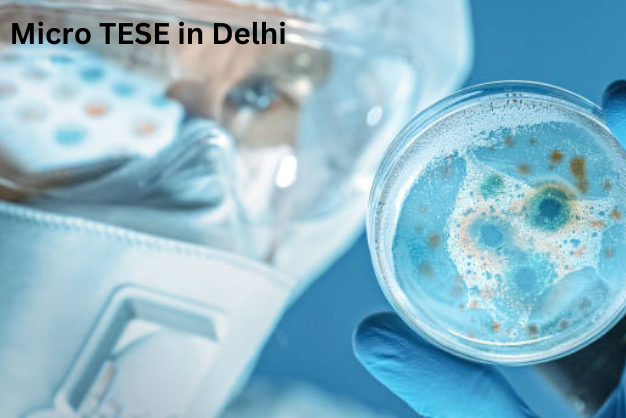What are the treatments available for Male Infertility?
Male infertility is a complex issue requiring personalized treatment strategies tailored to individual circumstances. Factors such as the duration of marriage, any coital difficulties, the wife's medical reports, the severity of abnormal semen analysis, the couple's age, and the duration of infertility all play crucial roles in determining the appropriate treatment. At New World Fertility Centre, a best IVF treatment clinic in Delhi NCR, a range of effective treatment options are available to address male infertility, including:
- Antioxidant Supplements: Tablets or sachets designed to improve sperm health.
- Clomiphene Citrate: A medication that can enhance sperm production.
- Injectable Hormones (HMG, FSH): Particularly effective for conditions like Azoospermia or severe oligospermia, these hormones are crucial in treating Hypogonadotropic Hypogonadism.
- Varicocele Repair Surgery: A surgical procedure to correct varicocele, a common cause of male infertility.
- ICSI (Intracytoplasmic Sperm Injection): Used for cases of oligospermia, where sperm is directly injected into an egg.
- MESA (Microsurgical Epididymal Sperm Aspiration) or PESA (Percutaneous Epididymal Sperm Aspiration): These procedures are employed for obstructive Azoospermia.
- TESA (Testicular Sperm Aspiration) or micro-TESE (Micro Testicular Sperm Extraction): These are advanced procedures for non-obstructive Azoospermia.
- Testicular Sperm Mapping: A method to identify sperm-producing areas in the testes.
- Electroejaculation and Vibroejaculation: Techniques used for patients with ejaculatory disorders.
- Sperm Freezing: Preservation of sperm for future use.
- IMSI (Intracytoplasmic Morphologically Selected Sperm Injection) or PICSI (Physiological Intracytoplasmic Sperm Injection): Advanced techniques for selecting the best sperm for fertilization.
New World Fertility Centre is dedicated to providing personalized care to offer the best possible outcomes for male infertility.
Micro-TESE: A Revolutionary Treatment
New World Fertility Centre is recognized as one of the top IVF centers in India, particularly for its expertise in specialized treatments like micro-TESE (Micro Testicular Sperm Extraction). This procedure is a breakthrough in the management of male infertility, especially for men with zero sperm count. Micro-TESE has the highest success rate in retrieving viable sperm, even in cases where previous TESA attempts have failed.
Micro-TESE is the definitive treatment for non-obstructive Azoospermia. The procedure is meticulously performed by skilled surgeons trained in this specialized technique, offering hope to men who have faced disappointments with other treatments. In the rare event that no sperm are found during micro-TESE, sperm donation remains the alternative.
The extracted sperm from micro-TESE is used for ICSI (Intracytoplasmic Sperm Injection), and any surplus sperm is carefully frozen for future use, eliminating the need for repeat procedures. This approach offers patients peace of mind and the best chance of achieving parenthood.
How Micro-TESE is Performed
Dr. Apoorva Mishra, a renowned expert in Andrology and Male Infertility, brings her extensive knowledge and experience to New World Fertility Centre. She has trained at the world-renowned "Androfert" center in Sao Paulo, Brazil. During the micro-TESE procedure, performed under general anesthesia, the testis is surgically opened and examined using a high-powered microscope (40x magnification). Dilated, white, and thick tubules are identified and retrieved for analysis in the embryology laboratory to confirm the presence of sperm.
This intensive search continues until viable sperm are found or until 25-30 tissue samples are examined without success.
Why Micro-TESE Succeeds When TESA Fails
The testis is a dynamic organ capable of sperm production even when certain areas are damaged. In procedures like TESA, where a needle is blindly injected, it is difficult to locate pockets of active sperm production. Micro-TESE, on the other hand, allows for a thorough examination of the entire testis under magnification, significantly increasing the chances of finding viable sperm.
Factors Determining Micro-TESE Success
Micro-TESE is a highly specialized and intricate procedure requiring exceptional skill and precision. Success depends not only on the expertise of the surgeon but also on the proficiency of the embryologist. The embryologist's meticulous examination of each tubule for several hours is crucial in identifying viable sperm.
New World Fertility Centre, under the leadership of Dr. Apoorva Mishra, is distinguished by its high success rates in micro-TESE procedures, making it a leader in the field of male infertility treatment.
Combined TESA-Micro-TESE or Simultaneous Mapping + Micro-TESE Procedure
Micro-TESE is an invasive procedure, leading some patients to inquire about less invasive options. One such approach involves performing a thin needle procedure (TESA) first to check for sperm. If sperm is found, ICSI is performed, and the need for micro-TESE is avoided. If no sperm is found, the micro-TESE procedure is then performed.
This combined approach increases the likelihood of finding sperm with minimal surgery but does require general anesthesia for both procedures.
Testicular Sperm Extraction (TESE)
TESE is a simpler version of micro-TESE. It involves making a small incision in the testis under local anesthesia to retrieve a tissue sample for analysis. TESE is typically used for patients with obstructive Azoospermia. For those with non-obstructive Azoospermia, micro-TESE is recommended due to its higher success rate.
Testicular Sperm Aspiration (TESA)
TESA is a quick and less invasive procedure where a thin needle is inserted into the testis to aspirate its contents under local anesthesia. It is often used in cases of obstructive Azoospermia.
PESA and MESA
PESA (Percutaneous Epididymal Sperm Aspiration) and MESA (Microsurgical Epididymal Sperm Aspiration) are minor procedures used to extract sperm in cases of obstructive Azoospermia. These procedures target the epididymis, a small tube behind the testis, allowing for sperm extraction without directly affecting the testis.
Conclusion
New World Fertility Centre in Delhi offers advanced fertility treatments, including the groundbreaking micro-TESE procedure. This technique has revolutionized male infertility treatment, providing hope to couples who once had limited options for biological parenthood. With high success rates and personalized care, New World Fertility Centre is committed to making the dream of parenthood a reality for many couples.
Frequently Asked Questions (FAQ)
1: What is male infertility, and how common is it?
Male infertility refers to the inability to conceive a child due to issues with sperm production, function, or delivery. It is quite common, with approximately 40-50% of infertility cases involving male factors.
2: What are the common causes of male infertility?
Common causes include varicocele (enlarged veins in the scrotum), infections, hormonal imbalances, ejaculation disorders, genetic conditions, and lifestyle factors like smoking, alcohol use, and obesity.
3: How is male infertility diagnosed?
Male infertility is typically diagnosed through a semen analysis, which evaluates sperm count, motility, and morphology. Additional tests, such as hormonal evaluations, genetic testing, and imaging studies, may be recommended.
4: What treatment options are available for male infertility at New World Fertility Centre?
Treatment options include antioxidant supplements, medications like Clomiphene citrate, hormone injections (HMG, FSH), varicocele repair surgery, ICSI, MESA/PESA, TESA/micro-TESE, testicular sperm mapping, electroejaculation, sperm freezing, and advanced techniques like IMSI or PICSI.
5: What is micro-TESE, and how does it differ from other procedures?
Micro-TESE (Micro Testicular Sperm Extraction) is an advanced procedure used to retrieve sperm in men with non-obstructive Azoospermia. Unlike TESA, which uses a needle to aspirate sperm, micro-TESE involves a surgical examination of the testis under a high-powered microscope, allowing for a more thorough search for viable sperm.
6: Why is micro-TESE recommended for non-obstructive Azoospermia?
Micro-TESE is recommended because it significantly increases the chances of finding viable sperm compared to other procedures. It allows for a detailed examination of the testis, identifying areas of active sperm production that might be missed with simpler techniques.
7: How successful is micro-TESE in retrieving sperm?
Micro-TESE has the highest success rate in retrieving sperm for men with non-obstructive Azoospermia, especially when previous attempts with TESA have failed. Success depends on the expertise of both the surgeon and the embryologist.

 Aug-30-2024
Aug-30-2024